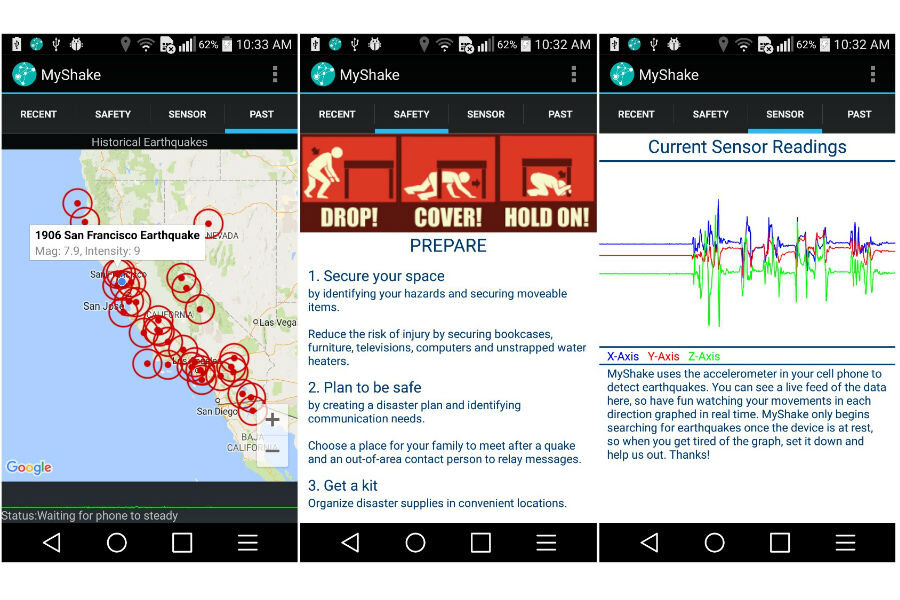Can cell phones help detect earthquakes?
A new cell phone application developed by researchers in California allows its users to help detect and collect data on earthquakes around the globe.
The app, called MyShake, was developed for Android devices by scientists at the University of California, Berkeley, in an effort to turn earthquake detection into a mass data collection project. Users who download MyShake and leave the app running in the background on their smartphones will allow the app to access to the device’s sensors, and, if an earthquake hits, send data to a central monitoring system, according to the app’s website.
“This is a citizen science project,” Richard Allen, the director of the Berkeley Seismological Laboratory, told the Los Angeles Times. “This is an app that provides information, education, motivation – to the people who’ve downloaded it – to get ready for earthquakes. Those same people are contributing to our further understanding of earthquakes, because they’re collecting data that will help us better understand the earthquake process.”
The “smartphone based seismic network” will not only help users contribute to data-based warnings about earthquakes in real time, but allow scientists to test an early warning system that could eventually send preemptive messages to its users when a tremor is imminent.
MyShake utilizes smartphones’ accelerometers – sensors that measure proper acceleration, or “g-force” – to detect unusual vibrations or shakes while the app is in use. Most phones now come equipped with accelerometers, which are commonly used for measurement, fitness, or gaming purposes. The MyShake application makes use of the technology if it senses what seems to be a quake of magnitude five or greater.
Allen told the Times that if 300 or more MyShake users’ phones record what seems to be a seismic event within a 60- by 60-mile area, the central system will register the occurrence as an earthquake.
While efforts are currently underway to establish a more sophisticated warning system, called ShakeAlert, for earthquakes along the west coast of the United States, the use of smartphones and MyShake could back up that system and make it work more smoothly overall. And, in places without any type of refined seismology equipment, such as Nepal or Peru, MyShake could become the most reliable and rapid source of earthquake detection.
“Nepal has almost no seismic stations. But they have 6 million smartphones,” Allen told the Times. “There are 600,000 smartphones in Kathmandu alone. So if we can get MyShake working, then we could potentially be providing early warning in Kathmandu.”
The recent use of Twitter as a warning system has also proven beneficial in some places, with users tweeting about the location and severity of earthquakes before official warnings are released. “Crowdsourcing” disaster notifications, while not as precise or advanced as some of the systems in development, would provide information to more people in a faster, cheaper way than are currently utilized.
“Smartphones are fantastic. And they’re cheap, and they’re ubiquitous,” Sarah Minson, a researcher with the US Geological Survey, said to the Times. “Scientific instruments are obviously much higher quality, but we are limited in terms of numbers by their expense.”
“There’s something about the smartphone idea that makes it just so much more personal to people,” she added.
The rollout of MyShake comes soon after the US federal government appropriated more than $8 million to ShakeAlert testing, including about $1 million for the continued development of MyShake.
“The question is, ‘Are we ready?’” Allen said of seismic warning systems during an earthquake summit at the White House earlier this month. “I don’t think that we are quite ready yet, but the fact that we are meeting here today means there is an opportunity to push this project forward and move to a full-blown earthquake early warning system in the next few years.”





